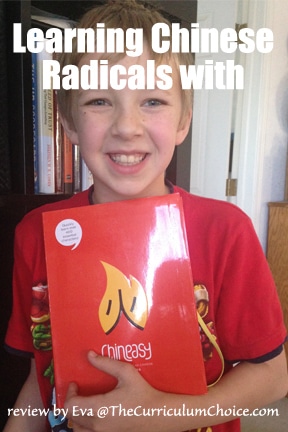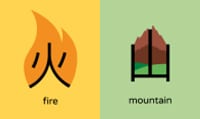When you begin to learn Mandarin Chinese, one of the first things you discover are the repetitive graphical components within different characters. For example, can you see what look like three little water drops within these water-related characters: 江 (jiāng / river),河 (hé / river), and 湖 (hú / lake).

Nature
土 Earth
日 Sun
月 Moon
木 Wood
田 Field
People
女 Woman
口 Mouth
心 Heart
手 Hand
足 Foot

Chineasy: The New Way to Read Chinese
, by ShaoLan Hsueh, is a book containing some 400 traditional and simplified Chinese characters incorporated into a drawing to help illustrate the meaning. It is designed to make learning to read Chinese characters fun and easy.
The book teaches the key characters or radicals on which the language is built and how these characters can be combined to form more complex words and phrases. (Additional Chineasy products include flashcards, a memory game
, and postcards
you can mail your friends.)
For example, in the illustrations below you see the fire radical has been transformed with a cute illustration to resemble its meaning, fire. Additionally, the mountain radical is also an easy one to remember.


It is very important for Chinese learners to know the Chinese radicals and this book makes that enjoyable and easy. However, the book is not intended for those who are studying Chinese more seriously, though it can still be a useful resource.
You won’t find a pronunciation guide and will thereby not likely know how to speak any of the words. Using Chineasy, you will undoubtedly learn a number of Chinese characters through some beautiful imagery and develop a better understanding of the culture.

Leave a Reply